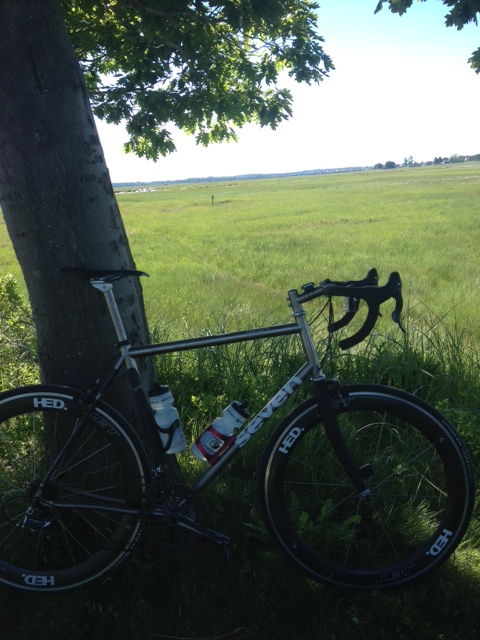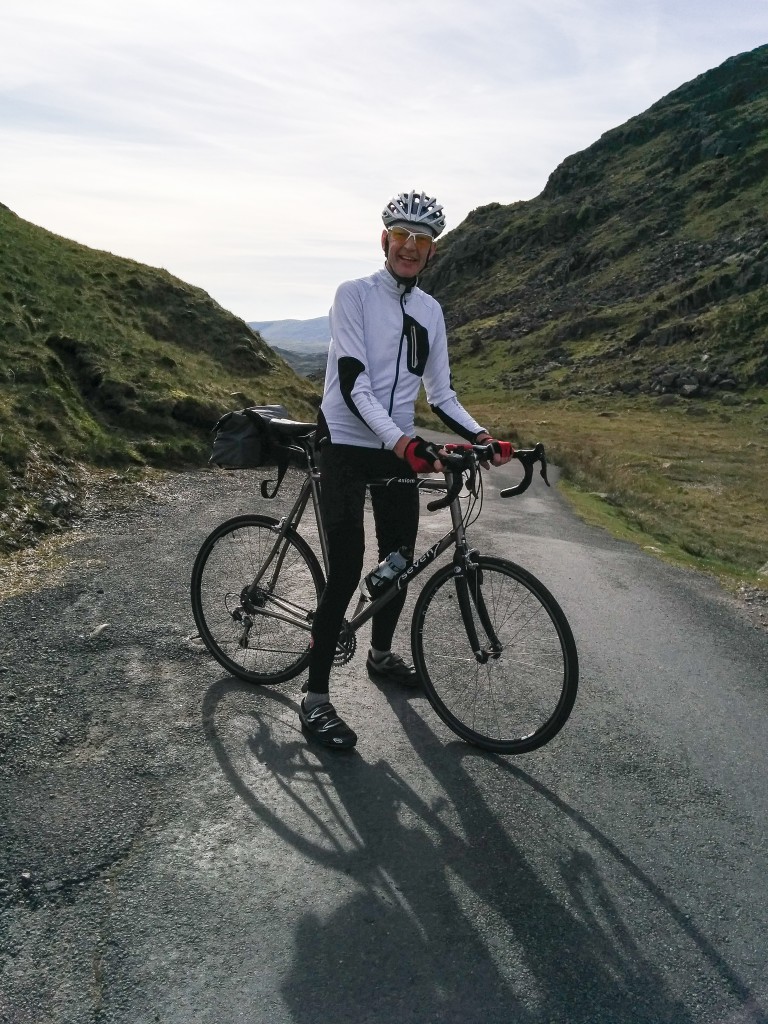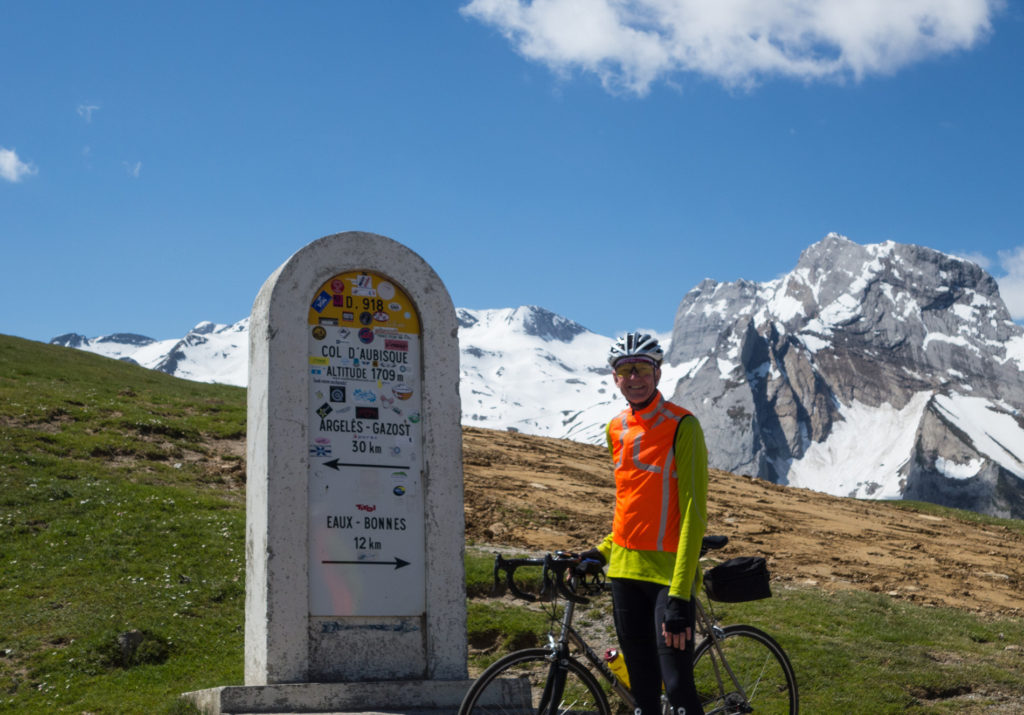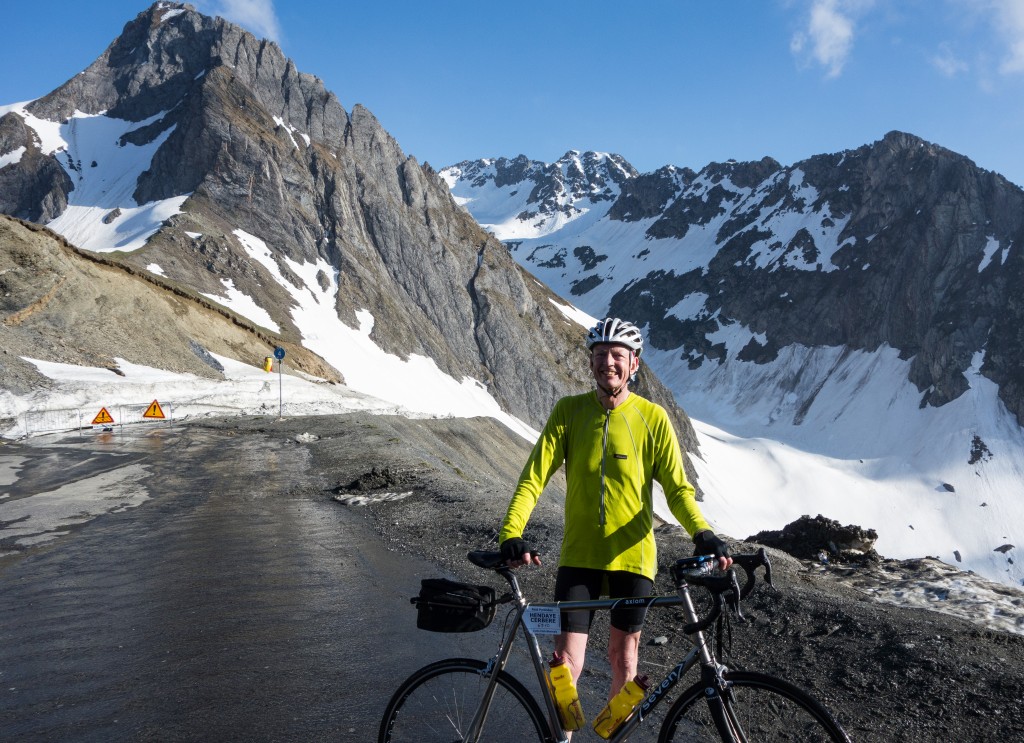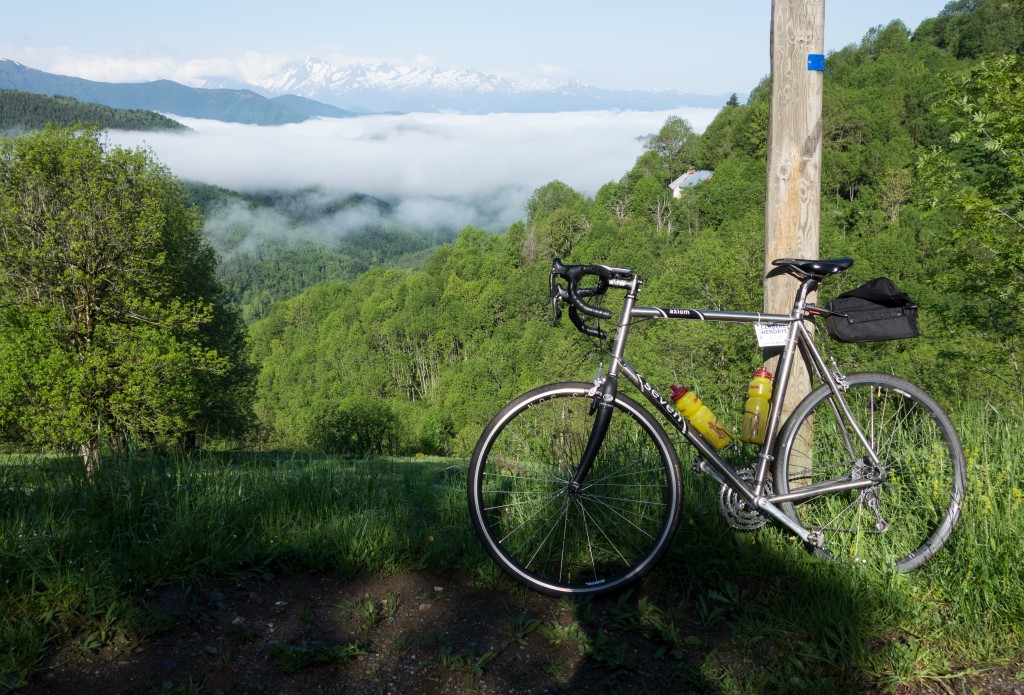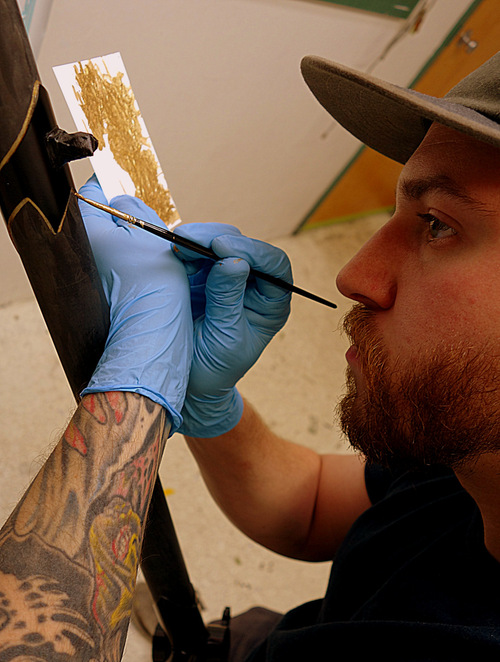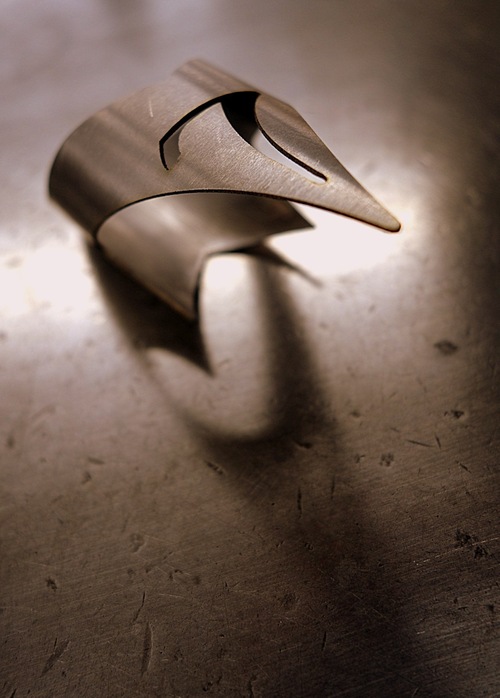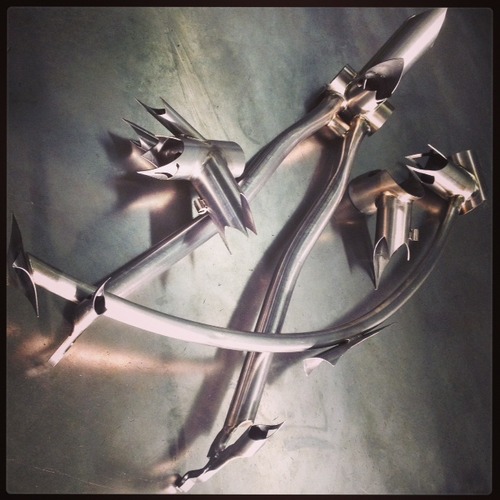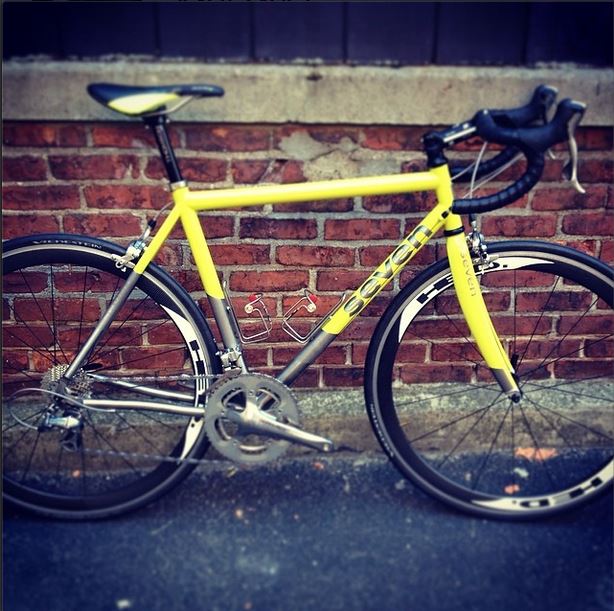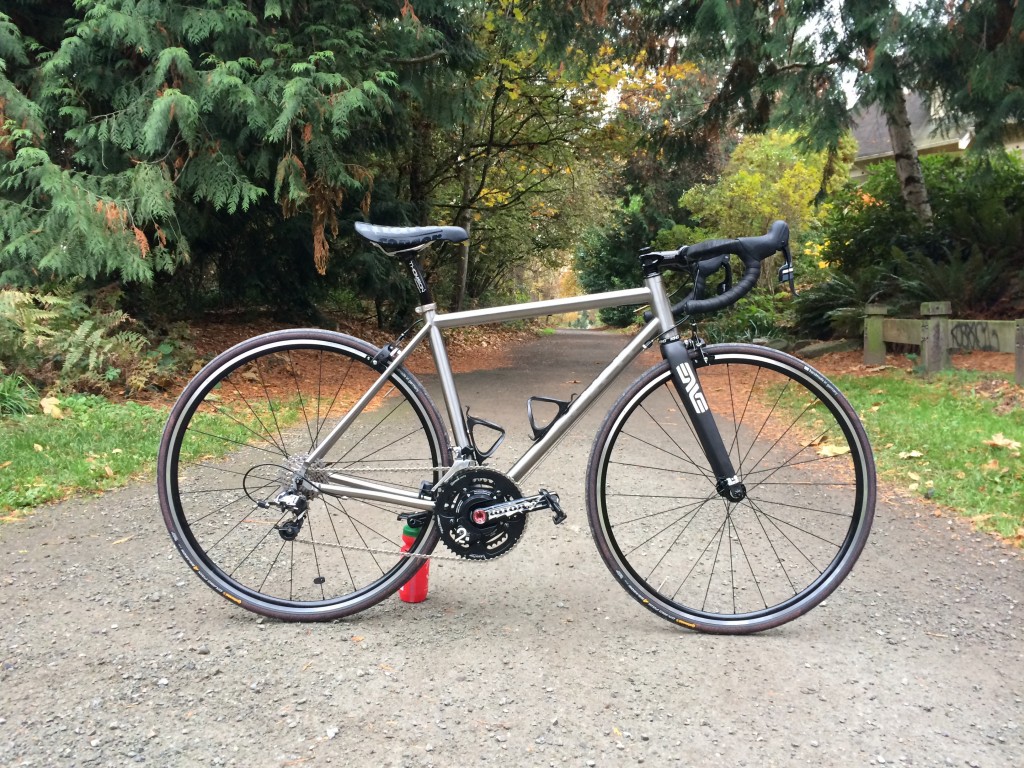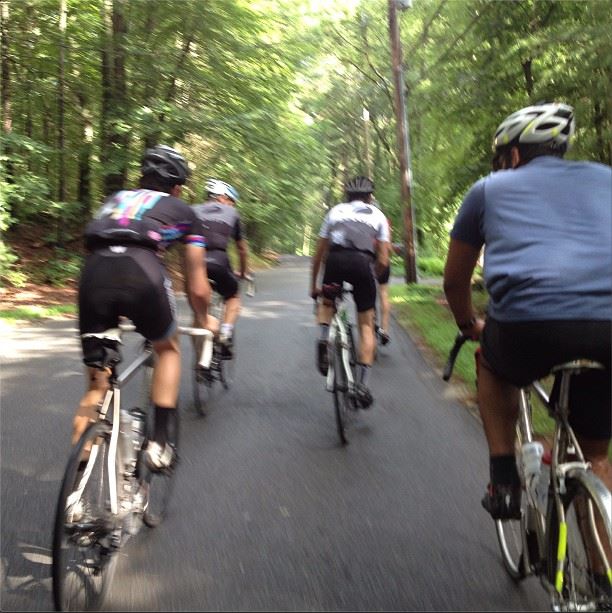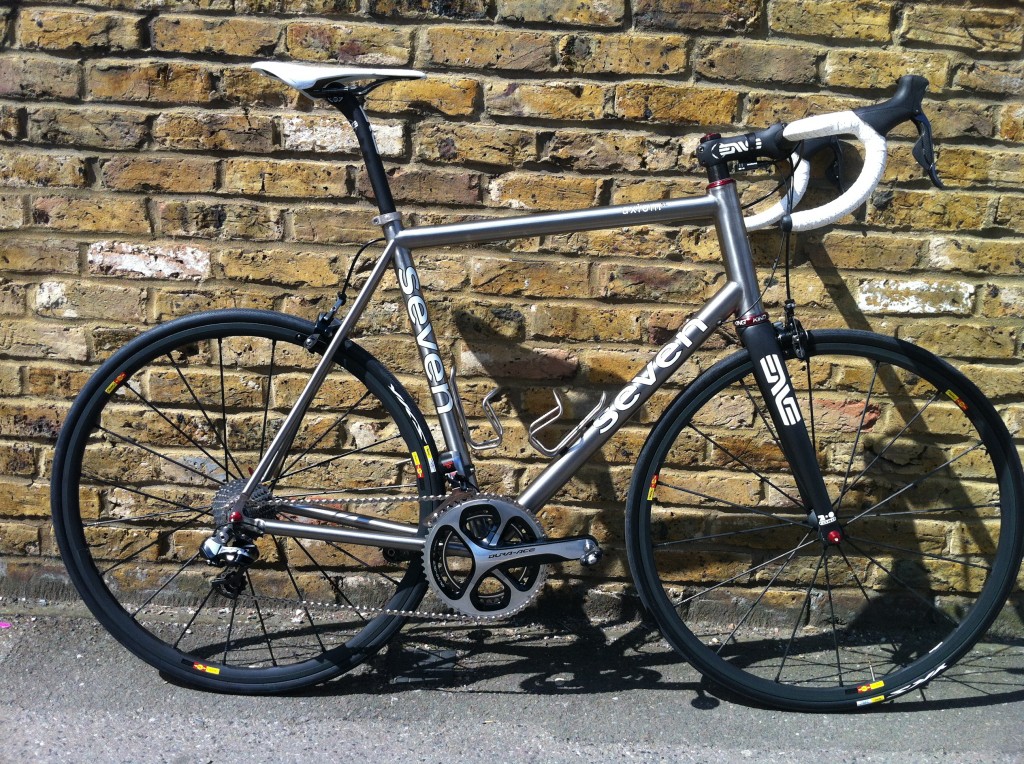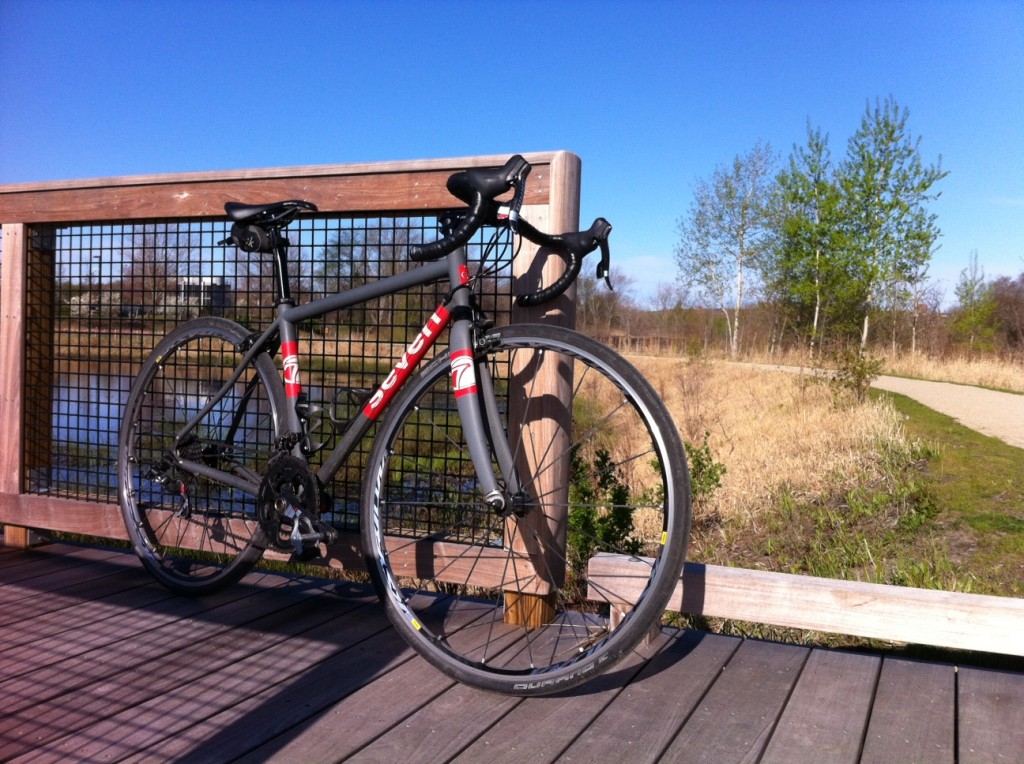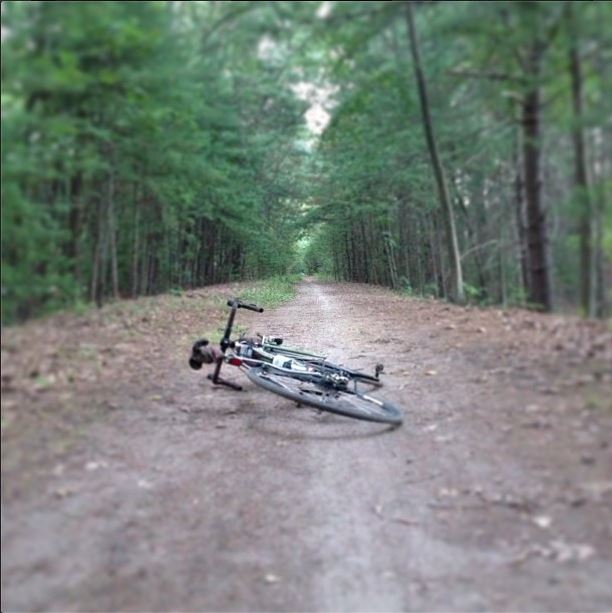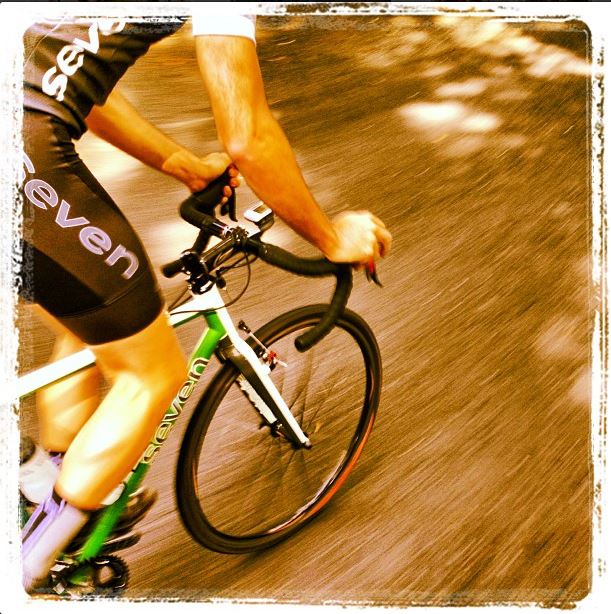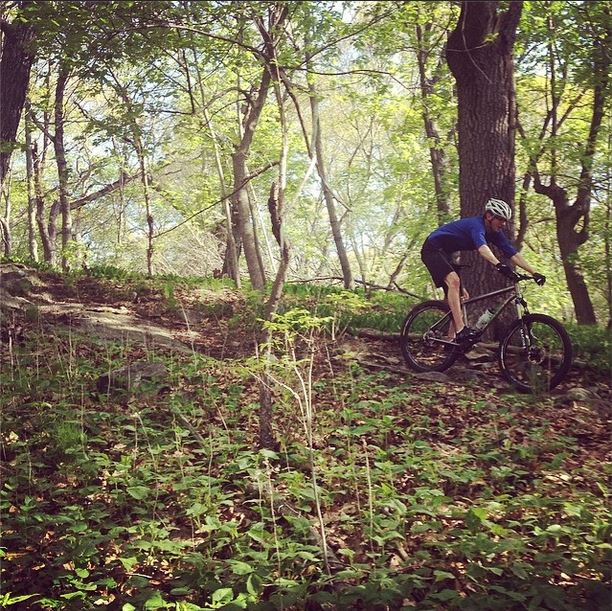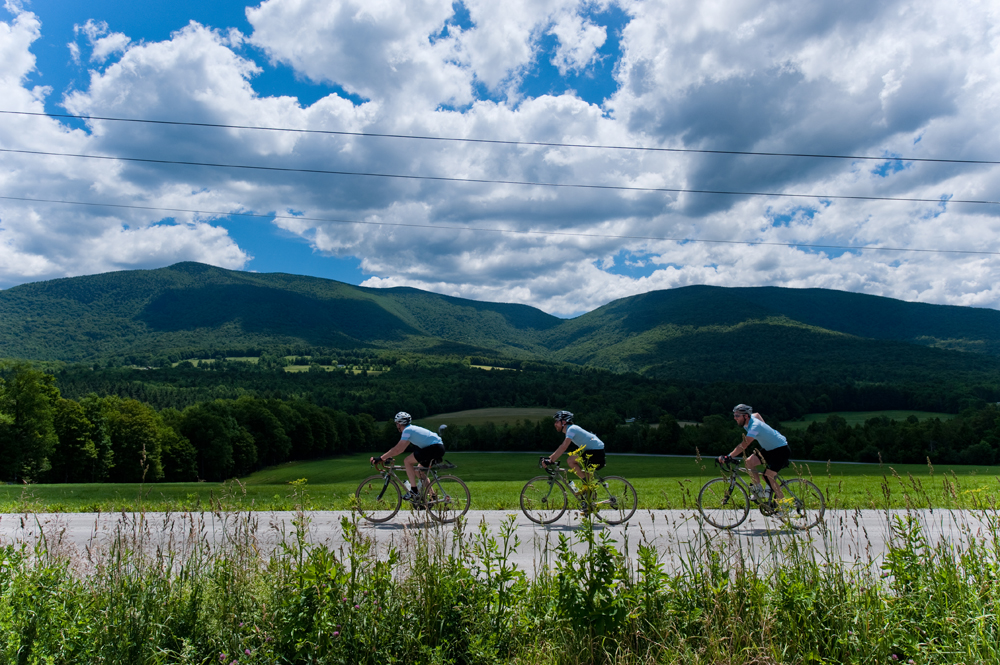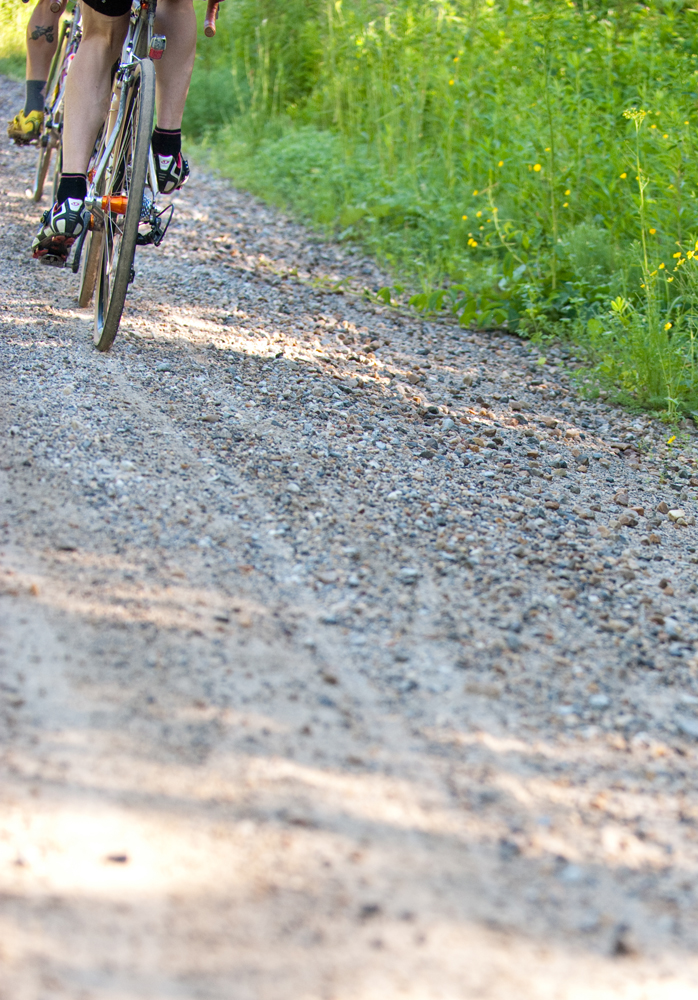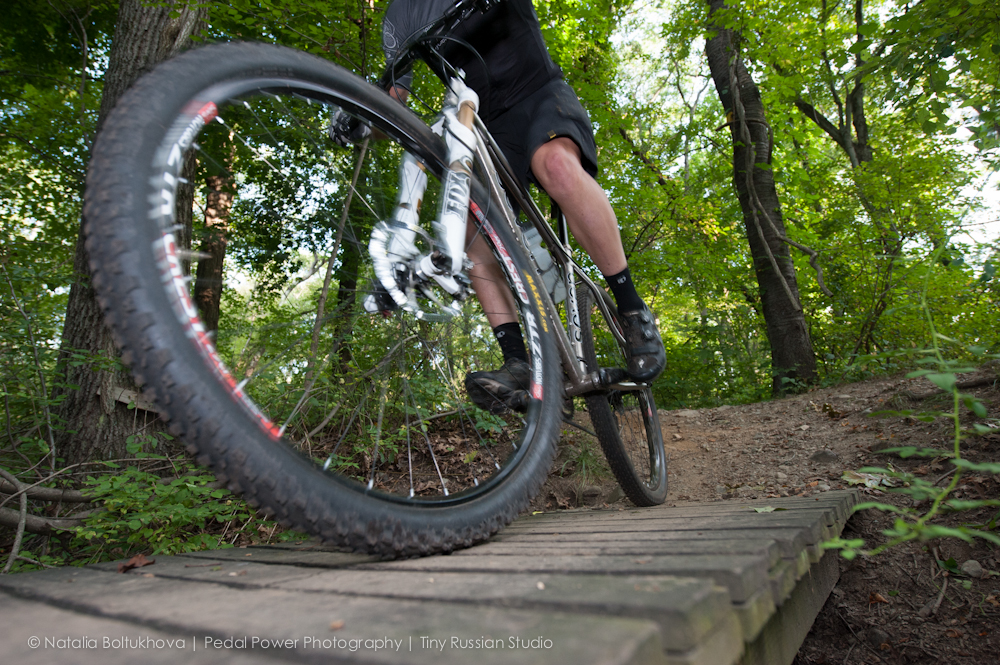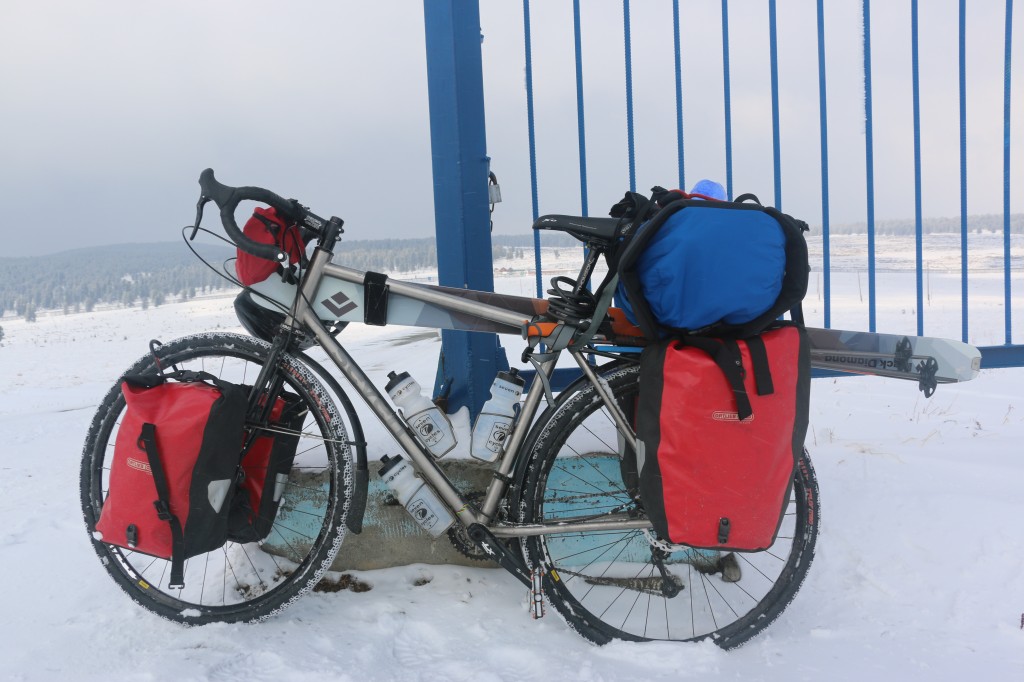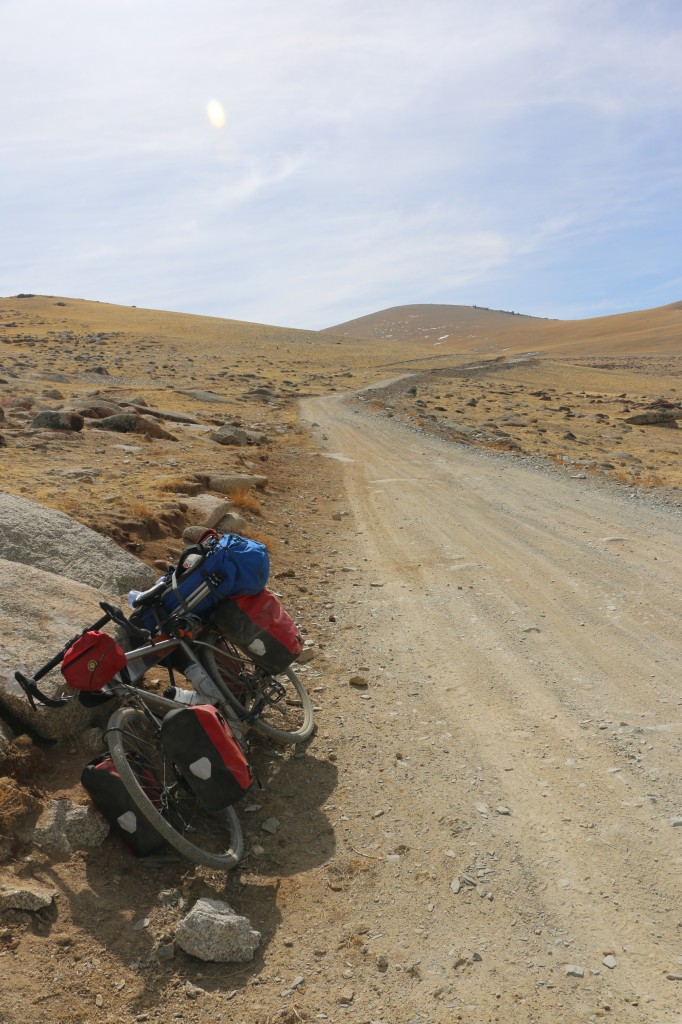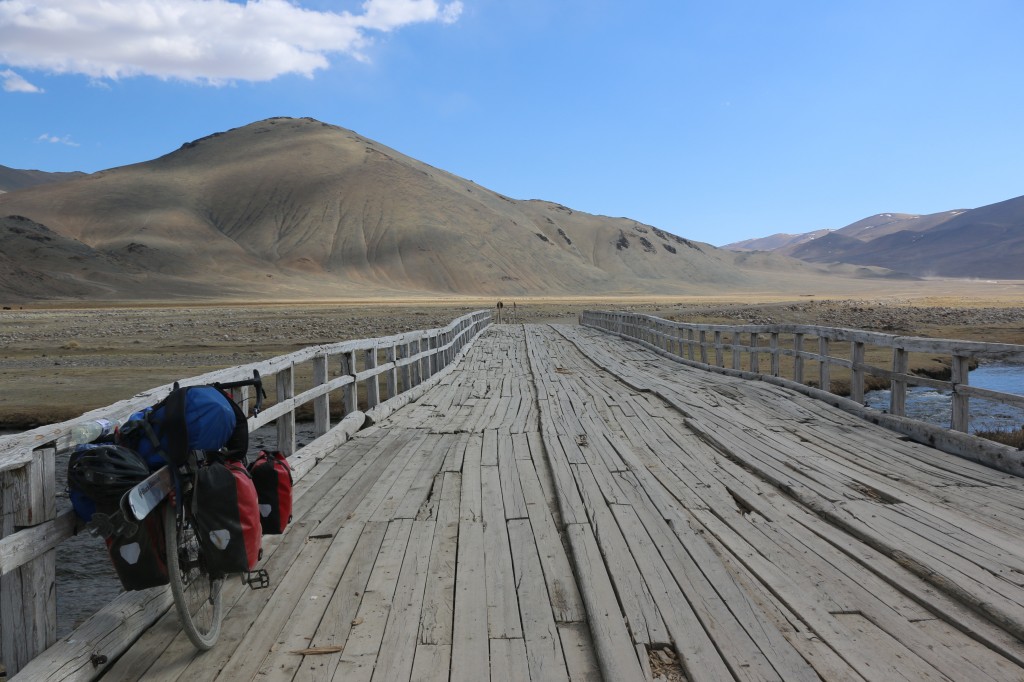“Port-LAND,” he shouted out as he walked down the train car, “Next stop, Port-LAND.” I had never heard the emphasis on the second syllable, but the conductor was quirky so it worked in this case. The Amtrak Downeaster runs from Boston’s North Station all the way to Brunswick, ME and travels through endless woods, lakes, rivers, ocean front, and cool old New England mill towns. There is even a stop in Haverhill, MA. If we had needed a fresh pair of Ksyrium’s we might have had enough time to make a dash to Mavic‘s headquarters. Our bikes, stowed away in bike specific wheel slots in the last rail car, cost just $5 more per ticket.
Hearing the conductor, we gathered our stuff, and headed for the doors.
June 21st is the longest day of the year, and the final glimmer of sunlight faded out as we were walking in the door of our hotel. Kristin’s Campagnolo freehub is loud on the road, but in the hallway of the hotel it was deafening. The three of us caused quite a commotion. While we were checking in, a woman wanted to know where we were headed. As it turned out, she was in Maine on a bike ride too, on a quest to ride their bikes in each of the 50 states. Her name was Pat, and when she saw our Sevens she was excited to tell us about how much she loved her Axiom.
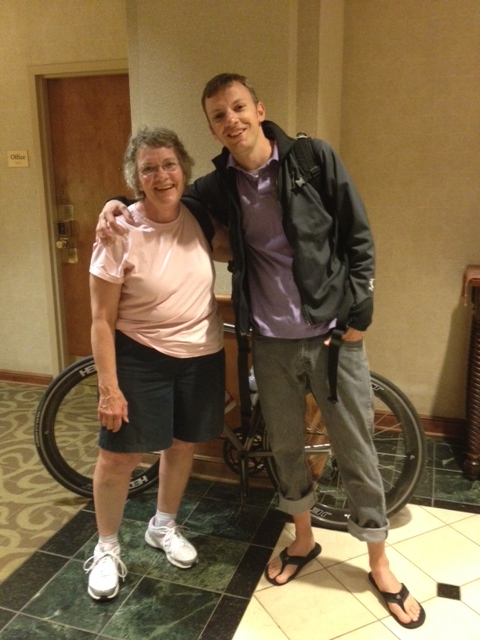
Maine, the way life should be.
We needed carbs for the morning’s ride and found them at the Local 188 in the form of a hearty paella. From there we walked to Novare Res, home to a most incredible selection of draft beers. More carbs. Portland is a town that is hard to say good night too, but we had a big Sunday ahead, and headed back just before midnight. Larabars, tubes, and pillows were divvied up, the alarm was set, and we hit the hay.
The forecast called for a day in the 70s, and the sunlight pouring through the split in the curtains promised to deliver. We shoved off a little past 7:30. Our hotel was at the bottom of Congress St., and while we rode up it, we joked that it might be the biggest climb of the day.
The entire ride, from Portland to Salem is about 115 miles, and over the length of the trip we’d climb a total of 1,200 vertical feet. A right turn on State, and a right on Congress and we were leaving Portland via the windy and windy Casco Bay Bridge. There was a 5K road race in South Portland that morning, and the entire bridge, on the southbound side, was bumper to bumper. We sailed past and made no friends in the process.
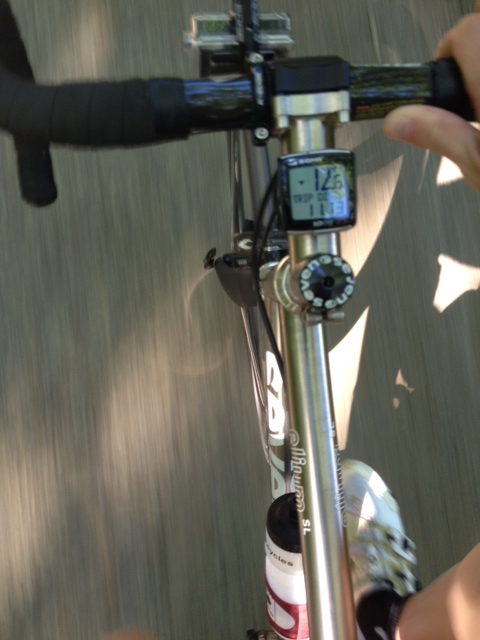
The Eastern Trail, an abandoned rail bed that has been turned into a hard pack, multi-use path, runs for 65 miles from South Portland to Kittery and was the highlight of the first fifth of the ride. The twenty mile stretch on our route may as well have been a nature preserve. Ponds, streams, salt water marshes, vernal pools, and woods outlined the path from the moment we got on until we departed near the town of Wells, ME.
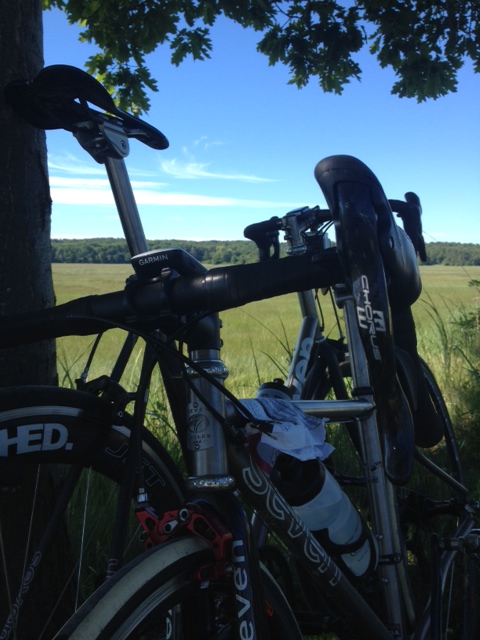
We headed east until we hit the coast, then south. Moving from the serenity of the Eastern Trail to the touristy beach communities is a dramatic change, but both are fun places to ride. We rode from one Olde New England town to the next, and discussed which old houses we like best.
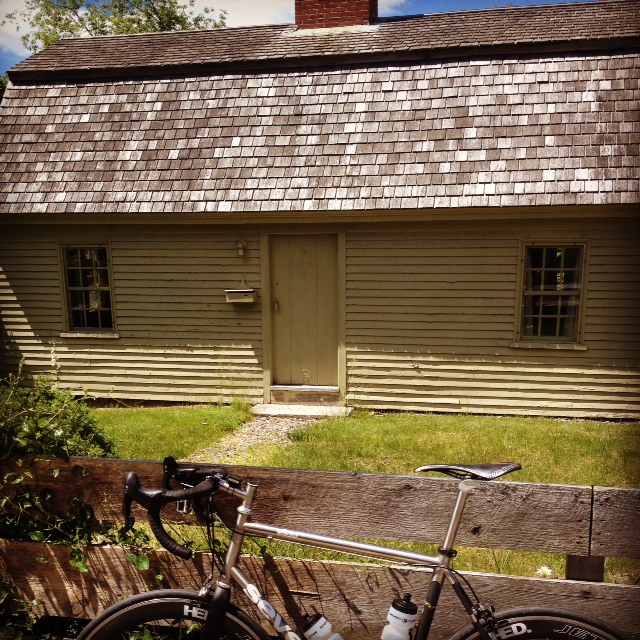
My favorite part of the route, prior to lunch, was Shore Rd., in Ogunquit. Crashing waves on the left, houses that belong in fairy tales on the right, and a freshly paved road that follows the shoreline down the middle, Maine didn’t disappoint.
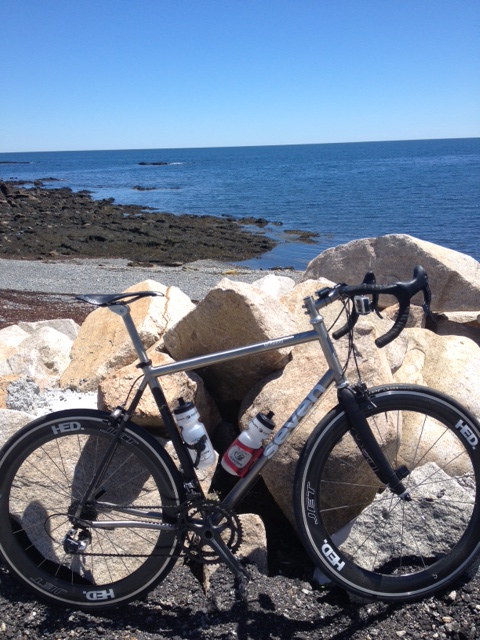
Making the transition from Maine to New Hampshire easy was the beautiful, newly refinished Memorial Bridge, and the promise of burritos once we crossed the border.
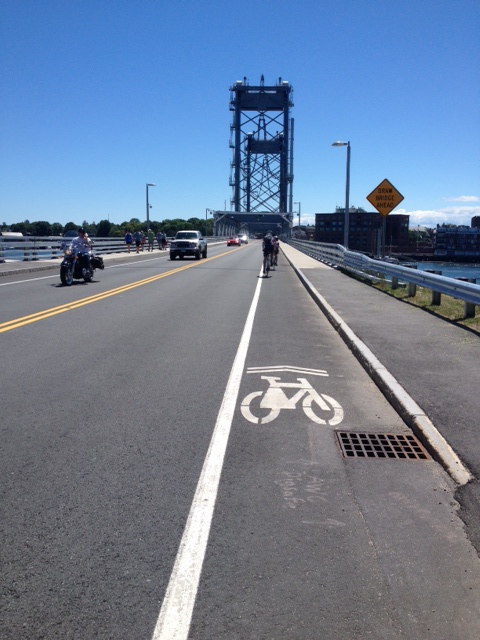
The bridge basically funnels traffic into Dos Amigos Burritos, and we didn’t resist the pull. Timing worked well as we were all hungry, the sun was at it’s peak, and the benches at Prescott Park were clear. Portsmouth represented the half way point of the ride, and while we weren’t setting a land speed record, we were in good shape to make it home before sunset. We sat for a bit, watched the boats, and devoured lunch.
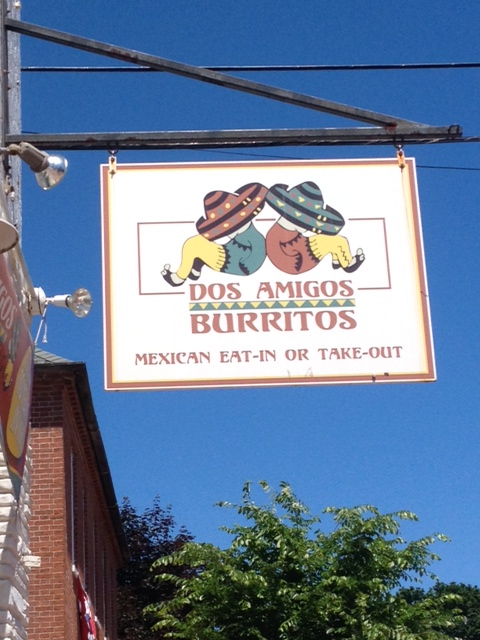
The remainder of the ride, into Massachusetts, featured a few miles of ocean front views. To ensure our legs stayed fresh to the finish, we pulled over in Newburyport, MA for coffee and a brownie casserole.
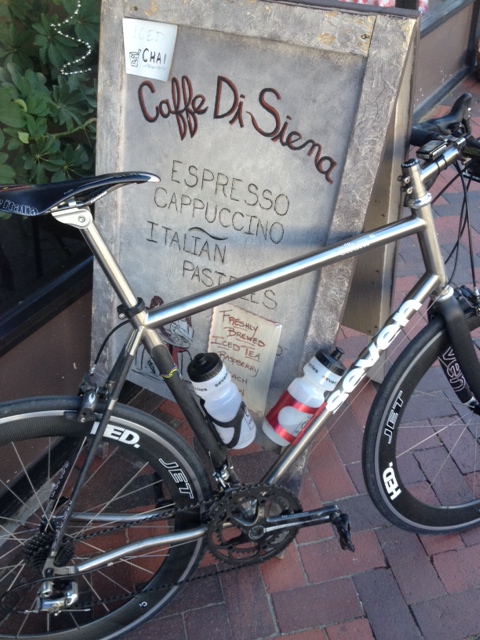
At least that is what I would call a brownie that was so full of walnuts, pecans, chocolate chips, white chocolate chips, butterscotch chips, and coconut. It hit the spot. 25 miles later, we reached our destination point, the Old Spot in Salem, MA. As you already know, it’s hard to beat a long day in the saddle.
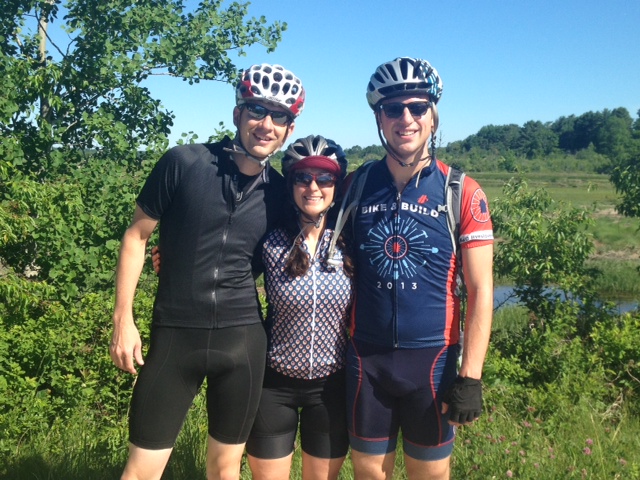
For an “easy” 117 mile route, P2S as we call it, it’s hard to top. How does your favorite century stack up?

